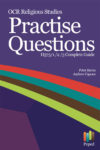Abortion trends
June 11, 2012
Recent abortion statistics show sharp rises and falls in different age groups, demonstrating how morality interacts with culture.
The largest rise is in the age group 30-34, where 10% more women chose to have abortions between 2010 and 2011. Two thirds of these were in a steady relationship. Just over half (51%) had had an abortion before, and the total of 30,000 women represents 16.3% of all abortions in that time period.

This increase in over 30s abortions represents a further shift in attitudes towards women’s right to choose and to control their own fertility. Whereas it might be expected that women who are not in a permanent relationship, or who were young and vulnerable might constitute the largest rise, these are now the minority (49%), and are actually falling as a percentage of the total. Under 18 abortions for example, actually fell by almost 20% between 2010 and 2011.
The philosopher J.L.Mackie has argued that morality reflects what he calls forms of life, or the habits and beliefs of segments of the population. As women have become more financially independent they have postponed marriage and the decision to have children, and also been more proactive in seeking abortions when contraception fails, or when unplanned pregnancy happens.
This tendency to be active rather than passive in the face of accidental pregnancy represents a change in women’s perception of their own rights. The right to have a child also embraces the right not to have a child if, for example, it affects a woman’s career or lifestyle choices. Arguably in the modern era two philosophical views jostle with each other – neither very well though out.
One is an individualistic utilitarianism which assesses my happiness and pleasure in terms of personal consequences. Social consequences are rarely considered in the individual’s choice. And the second view is one of rights. My right to choose is paramount, even though the idea of obligations on someone else to facilitate that choice is rarely considered. For example, with IVF treatment the cost of one cycle at £10,000 is rarely assessed in terms of the loss of £10,000 worth of hip replacements (or whatever other medical treatments can be bought for that sum). This of course is paradoxical, for perhaps in terms of social happiness we would be better off choosing the hip replacements.
This also represents a decline in the influence of religion in the formation of beliefs and attitudes. The strong sanctity of life view, that abortion is tantamount to murder, is really only held by strict conservative catholics or fundamentalist evangelicals. It rests on the argument that an embryo is a complete human being, created by God at conception, whose right to life is therefore absolute. Almost everyone else takes a process view of foetal development, meaning that a pre-embryo (up to 14 days from fertilisation) is of less moral worth to an embryo (up to eight weeks) which in turn is of less worth than a foetus, which itself has greater value as it nears full term.
It’s not suprising, then, to find that the overwhelming majority of abortions, 80%, occur before 10 weeks gestation at the embryo stage and just 10% happen after 13 weeks. The age profile and relationship status of these later abortions would be very interesting to find out, and as 6,000 abortions (3%) were to overseas people, this too would need to be factored in to any moralising on the rights and wrongs of UK abortion rates.
http://www.guardian.co.uk/news/datablog/2011/may/24/abortion-statistics-england-wales






0 Comments